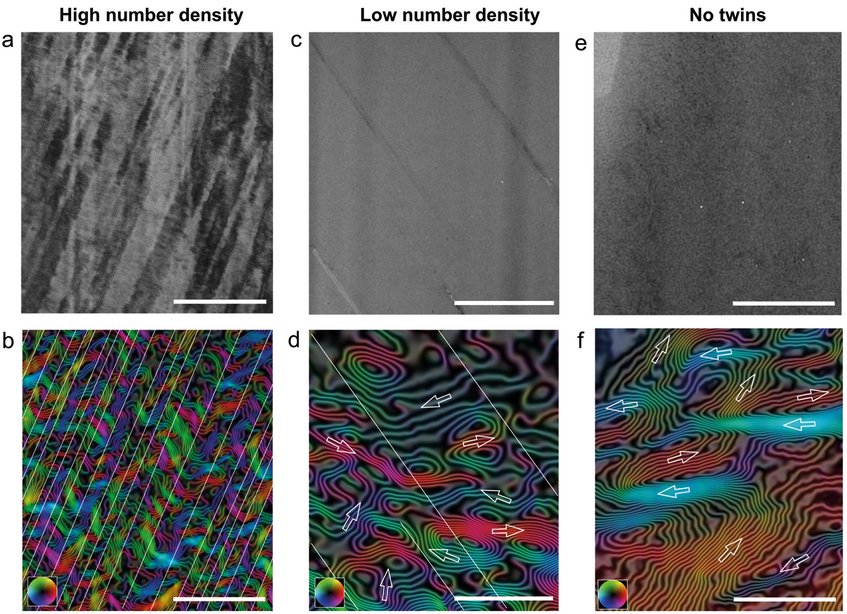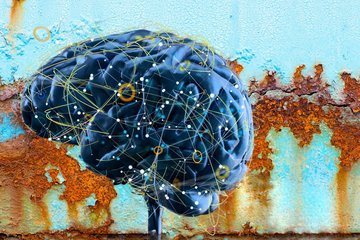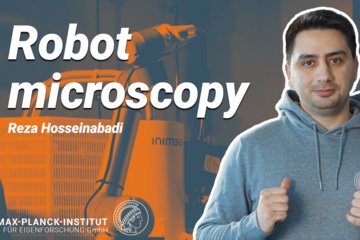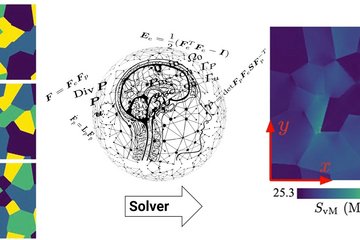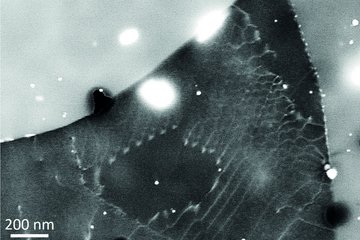Magnetic Materials
Magnetic materials enable the electrification of transport, communication, energy, and manufacturing. They serve for instance as hard magnets in electrical motors or as soft magnets in transformers. Their remanence, coercivity, and hysteresis losses determine the efficiency of devices that are urgently needed for enabling society and economy to use power from sustainable energy sources.
Several aspects make magnetic materials attractive study objects for the institute, in its transition towards a microstructure- and systems-oriented research facility, as many of their properties derive from an interplay of processing, microstructure, and chemistry, at scales that reach from manufacturing dimensions (e.g. Goss texture formation in secondary recrystallization) down to the electronic scale (e.g. defects in Heusler alloys). This turns research on magnetic materials not only a multi-physics and multi-scale problem, but requires also close collaboration between characterization, processing, and theory, disciplines where the institute has strength. The MPIE joined forces in this field with the groups of O. Gutfleisch at TU Darmstadt, R. E. Dunin-Borkowski at the Ruska Center for high-performance electron microscopy in Jülich, and with M. Acet and M. Farle at the University Duisburg-Essen. The activities include bi-weekly seminars and fuel the collaborative research center CRC/TRR 270 ‘Hysteresis design of magnetic materials for efficient energy conversion’ (see p. xxx).
We work with soft and hard magnetic materials as well as invar alloys. Soft ferromagnetic materials are alloys that magnetise and demagnetise at low hysteresis losses. We study particularly Fe - 3.2 mass % Si steels [1], which serve in electrical power transformers, motors, and generators. The Si increases the electrical resistivity, reducing eddy current losses. Grain-oriented Fe-Si steel used for non-rotating applications, i.e. transformers, has a strong preferred crystallographic orientation. In Fe the easiest directions of magnetisation are the <001> crystal directions. In grain-oriented Fe-Si steel the Goss orientation, i.e. the {110}<001> orientation, is realised through abnormal grain coarsening to minimise magnetic losses. Our research deals with the mechanisms behind the abnormal growth of crystals with this specific orientation. While earlier approaches suggested inhomogeneous solute and particle pinning as possible causes, our recent results reveal a dislocation substructure in the grain interiors. These seem to promote the local dissolution of second phase pinning centres, thus affecting the grain’s growth behaviour.
Another project line is about rare-earth-free magnets, particularly Heusler phases and high entropy alloys. Regarding binary Heusler alloys we study the τ phase variant of the Mn55Al45 alloy. This is a metastable phase, which forms from the high temperature hexagonal-close packed (hcp) ε-phase when suppressing the competing equilibrium β-Mn (cubic) and γ2 (Al8Mn5, rhombohedral) phases. The equilibrium phases are non-magnetic and their presence, even in trace fractions in the alloy, deteriorates the magnetic properties. During growth, the τ phase forms twins, antiphase boundaries, and dislocations, due to growth misplacements at the interphase boundary. This defect structure influences the magnetic hysteresis of the ferromagnetic τ phase alloy, where specifically twins act as domain wall nucleation and pinning sites. We could show that twinning involves significant segregation of Mn along the twin boundaries by combining transmission electron microscopy (TEM) and atom probe tomography (APT). An enrichment of ~8 at.% Mn was measured along the twin boundaries with a confined depletion outside of it, suggesting short range diffusion occurring during massive transformation. This finding shows that the design of effective domain wall pinning centres in such materials needs to consider both, their structural and their confined chemical decoration state, Fig. 1 [2, 3].
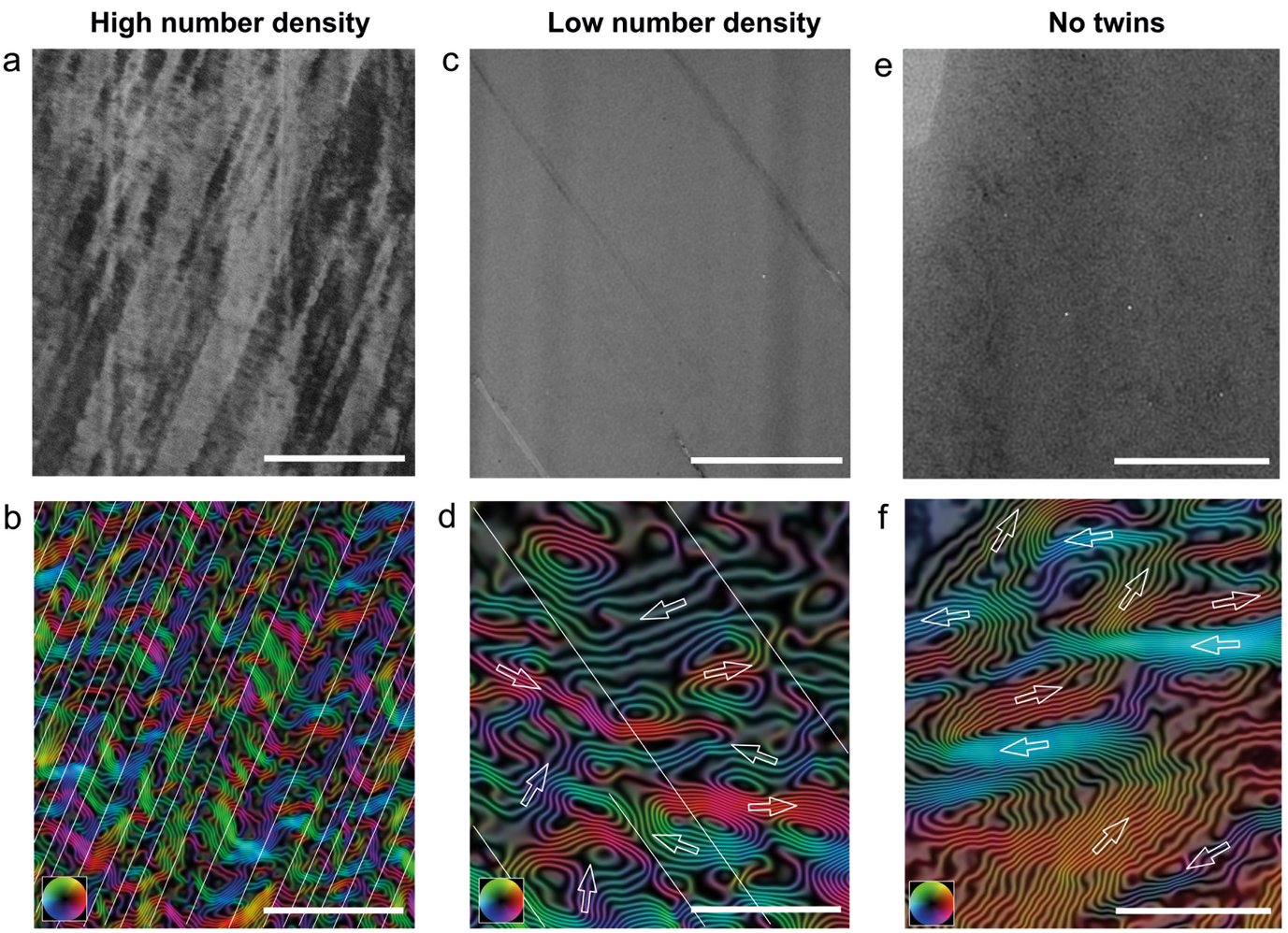
- Frommert, M.; Zobrist, C.; Lahn, L.; Böttcher, A.; Raabe, D.; Zaefferer, S.: J. Magn. Magn. Mater. 320 (2008) 657.
- Palanisamy, D.; Raabe, D.; Gault, B.: Scr. Mater. 155 (2018) 144.
- Palanisamy, D.; Raabe, D.; Gault, B.: Acta Mater. 174 (2019) 227.
